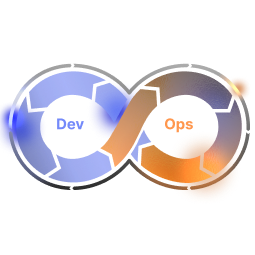DevOps Tools: Revolutionizing Software Development


Key takeaway
Discover top DevOps tools characteristics for seamless CI/CD automation and enhanced team collaboration.
DevOps tools and DevSecOps tools are indispensable for teams aiming to boost collaboration, refine processes, and expedite delivery. These tools enable organizations to seamlessly integrate development and operations, nurturing a culture of continuous enhancement and innovation. With the right DevOps and DevSecOps tools, teams can automate workflows, monitor application performance, and guarantee smooth deployments.
Core Features of Effective DevOps Tools
In the fast-evolving realm of software development, effective DevOps tools and DevOps platforms are crucial for refining processes and fostering collaboration. One essential feature is robust automation for Continuous Integration and Continuous Deployment (CI/CD). Automation accelerates development cycles by removing manual tasks, enabling developers to concentrate on coding and value delivery.
Another vital feature is seamless integration with existing workflows and tools. A well-crafted DevOps tool should enhance your current ecosystem, whether it includes version control systems, cloud services, or testing frameworks. DevOps tools must be designed for effortless integration with a broad array of tools, ensuring your team maintains productivity without disrupting established processes. This capability boosts collaboration among team members and creates a cohesive environment for managing the complete software development lifecycle with DevOps and DevSecOps practices.
Real-time monitoring and analytics are indispensable features of effective DevOps tools. They allow teams to proactively identify issues and make data-driven decisions. DevOps tools should offer powerful analytics that deliver insights into deployment performance, application health, and user experience. This level of visibility empowers teams to optimize processes, ensuring every release meets the highest standards of quality and reliability.
The Critical Role of Continuous Delivery
Continuous delivery (CD) is pivotal in modern DevOps practices, significantly enhancing software quality by ensuring automatic testing and deployment of code changes. This approach enables teams to promptly and reliably deliver new features and updates to users, reducing bug risks and improving overall product stability. By integrating rigorous testing at every pipeline stage, teams can detect issues early, guaranteeing that only top-quality code reaches production.
DevOps tools should streamline deployment by automating the CI/CD pipeline. Teams should be able to deploy code seamlessly, minimizing manual intervention and potential human error. This automation accelerates release cycles and fosters a culture of continuous improvement, allowing teams to focus on delivering value without being bogged down by deployment complexities.
The impact of continuous delivery on team productivity and collaboration is profound. By reducing deployment friction, DevOps tools should enable cohesive teamwork, breaking down silos and promoting shared responsibility for quality. Developers, operations teams, and product managers collaborate effectively, aligning goals and accelerating feedback loops. This collaboration spurs faster innovation cycles and improves morale, as teams witness the direct impact of their work on user satisfaction and business outcomes.
Top DevOps Tools to Consider
- Harness
- GitLab
- GitHub
Harness's Integral Role in the DevOps Toolchain
Managing numerous DevOps tools and workflows can be daunting. Harness simplifies this complexity by providing centralized management, allowing teams to streamline processes and focus on delivering high-quality software. With Harness, you manage everything from CI/CD pipelines to monitoring and deployment in one unified DevOps platform, reducing friction and enhancing collaboration across development and operations teams.
Harness excels with seamless integration with various services. Whether using popular cloud providers, container orchestration tools, or collaboration platforms, Harness connects effortlessly with existing systems. This eliminates silos in DevOps and DevSecOps processes, enabling full toolchain power without complex integrations. The intuitive interface and powerful APIs ensure quick adaptation to changing needs without disrupting workflows.
The benefits of a unified DevOps platform like Harness are immense. Consolidating tools reduces overhead associated with managing multiple platforms, saving time and enhancing visibility and control over the DevOps process. With real-time analytics and insights, teams make informed decisions that drive efficiency and improve software delivery. Harness empowers organizations to embrace DevOps practices confidently, turning challenges into innovation opportunities.
Future Trends in DevOps Tools
As technology evolves, so do the tools that help teams streamline development and operations. Emerging technologies like serverless computing, microservices architecture, and container orchestration are reshaping DevOps tools, offering greater flexibility, scalability, and efficiency for faster, more reliable application deployments.
A significant trend in DevOps is the increasing role of artificial intelligence (AI). These technologies transform automation, monitoring, and decision-making approaches. Organizations use AI to predict potential issues, optimize resource allocation, and enhance DevOps pipeline performance. This shift improves efficiency and allows teams to focus on strategic initiatives rather than mundane tasks.
At Harness, we prioritize staying ahead of these trends and preparing for the future of DevOps tools. Our Continuous Delivery platform integrates AI-driven insights to help teams make data-informed decisions, automate complex processes, and optimize software delivery lifecycles. By continuously innovating and adapting to technological advancements, Harness equips customers with the best tools for excelling in their DevOps journey. As we look to the future, we remain dedicated to enhancing our platform with features that meet current demands and anticipate future needs, solidifying our leadership in the DevOps tools space.

